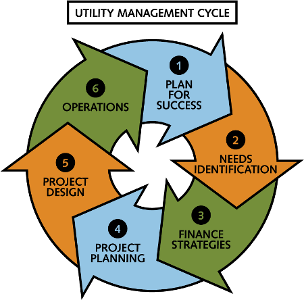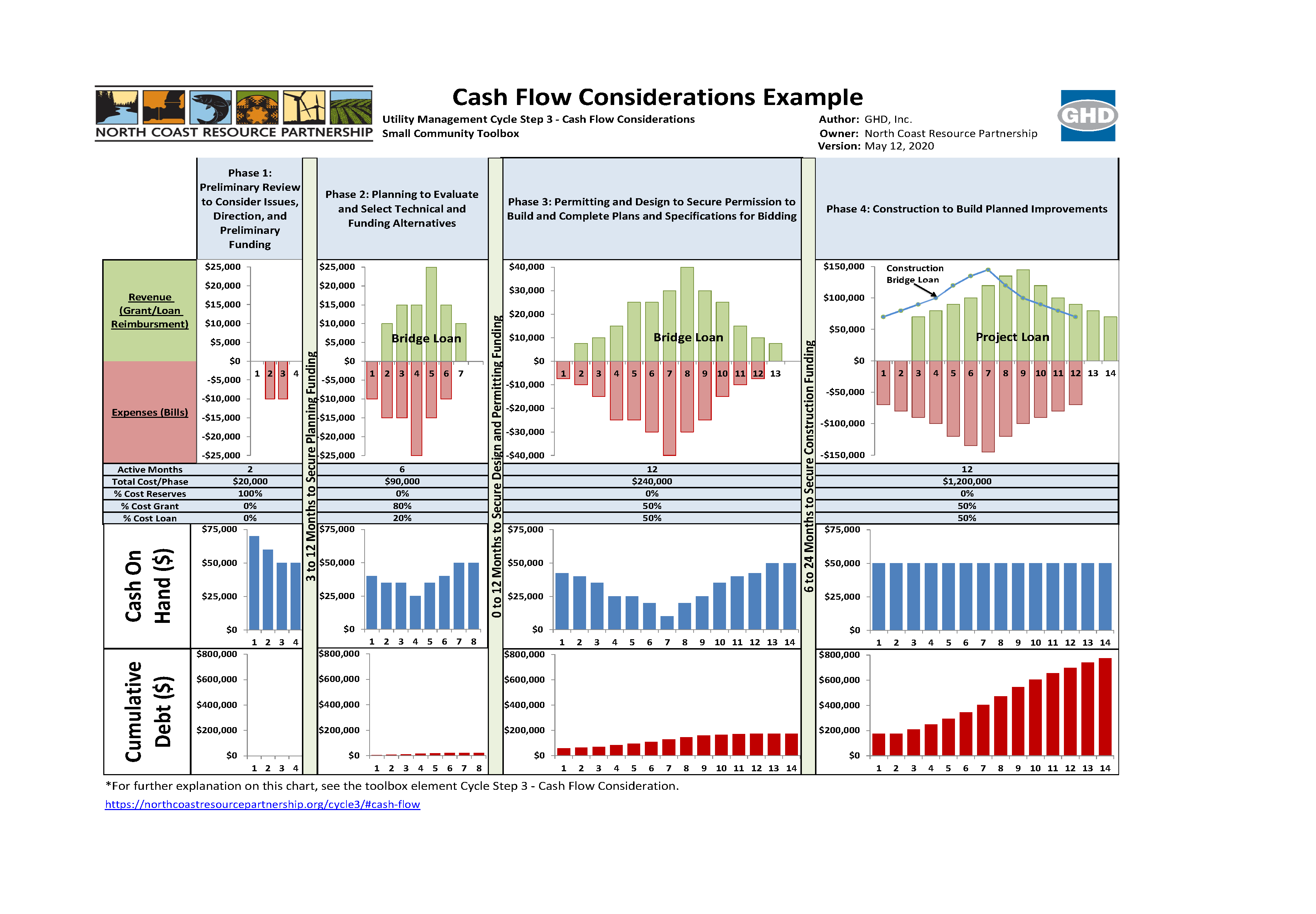One of the common barriers to system improvement is lack of funds. This tool provides information on what funding agencies are looking for in terms of project types and which stage or component of the project is funded. This will help to identify the correct funding agency for the current stage of your project.
The NCRP keeps an updated list of project funding opportunities.
The project type will determine the relevant funding programs. The following resources present methods for screening potential funding agencies based on their mission and the project type.
- Funding Program Agency/Project Type Matrix [pdf]:
This table provides information on the stage or component of a project an agency will fund. The matrix can be used by looking up the stage of your project and/ or a component that needs funding and then reading across to the types of project.
California Financing Coordinating Committee (CFCC): A multi-agency group formed to facilitate and expedite the completion of various types of infrastructure projects by helping customers combine the resources of several agencies. The CFCC has several useful tools:
- A common inquiry form that can be used to query multiple funding agencies about their ability to fund a project is available on the CFCC website. From the home page, the CFCC Inquiry Form is available under Quick Links at the top right of the home page. Additionally a copy of the inquiry form and answers to other questions on the CFCC can be obtained by e-mailing ibank@ibank.ca.gov.
The California State Library, California Grants Portal: one destination to find all state grant and loan opportunities provided on a first-come or competitive basis. Visit grants.ca.gov to find funding opportunities for your community.
California Governor’s Office of Emergency Services Grants Management: The CalOES Division administers federal and state funds for criminal justice, emergency management, victim services, and homeland security. Disaster recovery and preparedness funding may be available from this source.
The State Water Board, Division of Financial Assistance (DFA), provides Funding Assistance Options with a tool entitled: “Help Me Find Funding” Options. There are four fields (funding type, applicant type, project phase, and project type) that when filled out provide you with DFA’s currently available funding source(s).
CoolCalifornia Funding Wizard helps project organizers locate grant funding and initiatives for projects which are concerned with sustainability.
Rural Community Assistance Corporation, Environmental Infrastructure Loans: RCAC offers loans to finance water and waste facility projects. RCAC’s loan program is unique — it provides the early funds small rural communities need to determine project feasibility and to pay pre-development costs prior to receiving state and federal funding. Website: http://www.rcac.org/home
Indian Health Service’s (IHS) Mission Statement is to raise the physical, mental, social and spiritual health of American Indians and Alaska natives (AI/AN) to the highest level. IHS can connect tribes with potential resources for to support project funding.
First Nations Development Institute Grantmaking: First Nations Development Institute provides financial and technical resources to Tribes and Native nonprofit organizations to support asset-based development efforts. This website has a link to current grant opportunities and resources for grant seekers. The site has a dedicated California Tribal Fund that was created to support California-based, California-Native-led nonprofits and Tribal programs in controlling and protecting their food systems, water, languages, traditional ecological knowledge, and land.
CalEPA California Native American Tribal Relations: Funding Opportunities: Several state agencies and departments that provide funding to Tribal governments for infrastructure projects are presented on this web page, including the State Water Board, CA Energy Commission, and the CA Office of Emergency Services.
California Climate Investments For Tribal Governments: This web site contains links to two dozen funding opportunities, including the Safe and Affordable Drinking Water Fund, which helps struggling water systems sustainably and affordably deliver safe drinking water.
US EPA Guidebook of Financial Tools: This book is a reference work examining a wide range of different tools for financing sustainable environmental systems. The book examines comprehensive financial tools, such as finance organizations and websites, public-private partnerships, and traditional means of raising revenue, borrowing capital, and enhancing credit. It also describes specialized financial tools geared towards specific geographic areas and project types.






